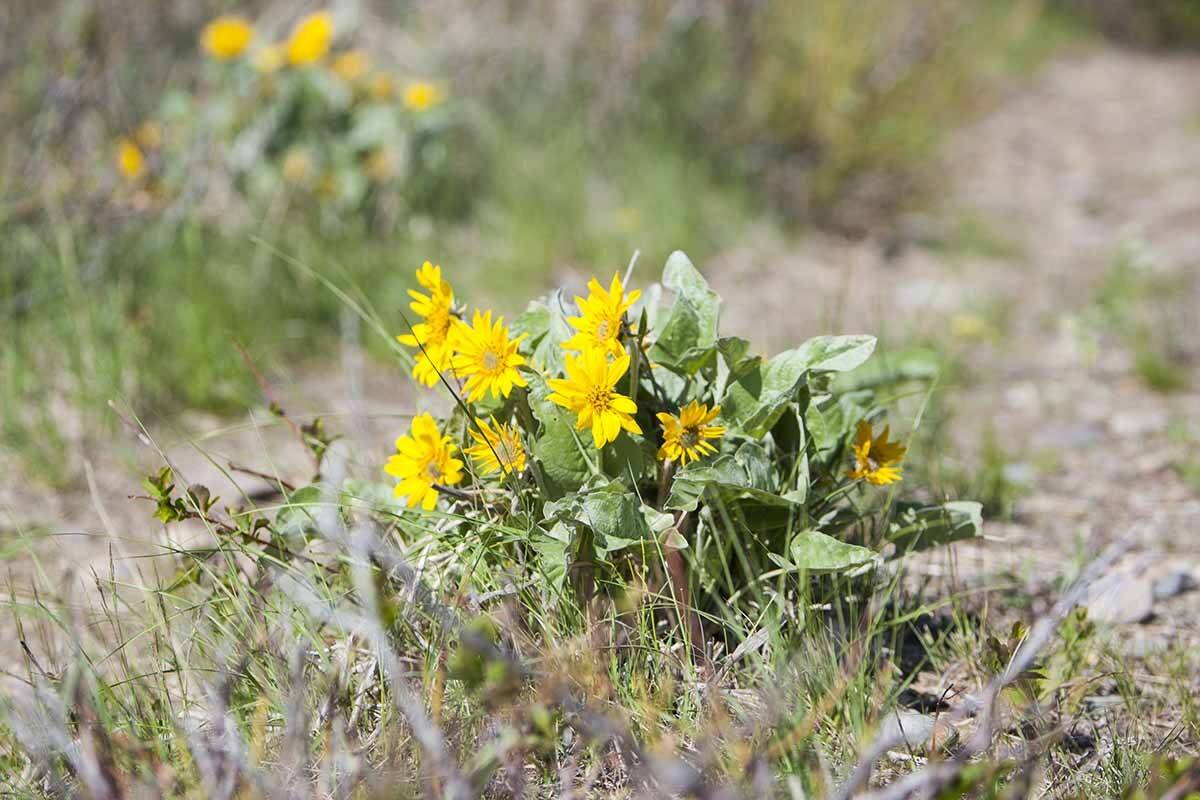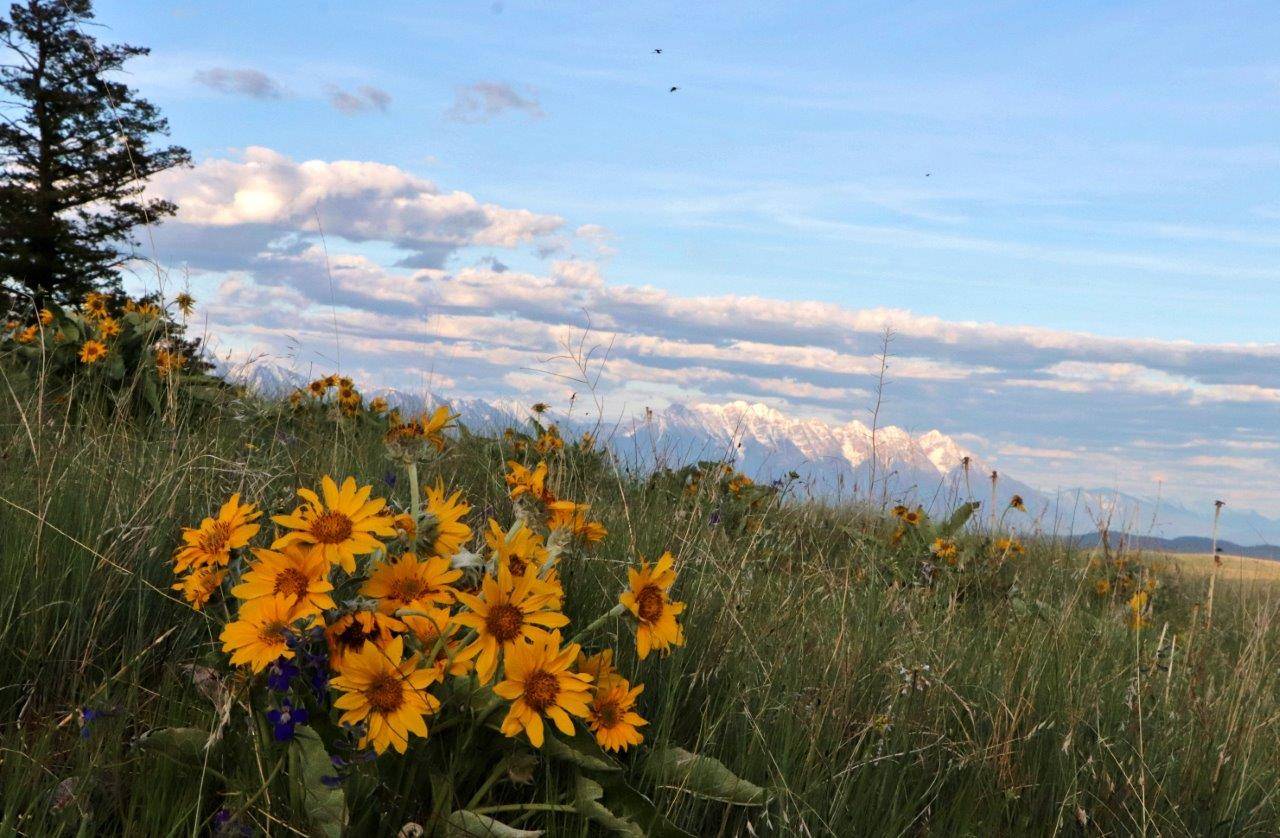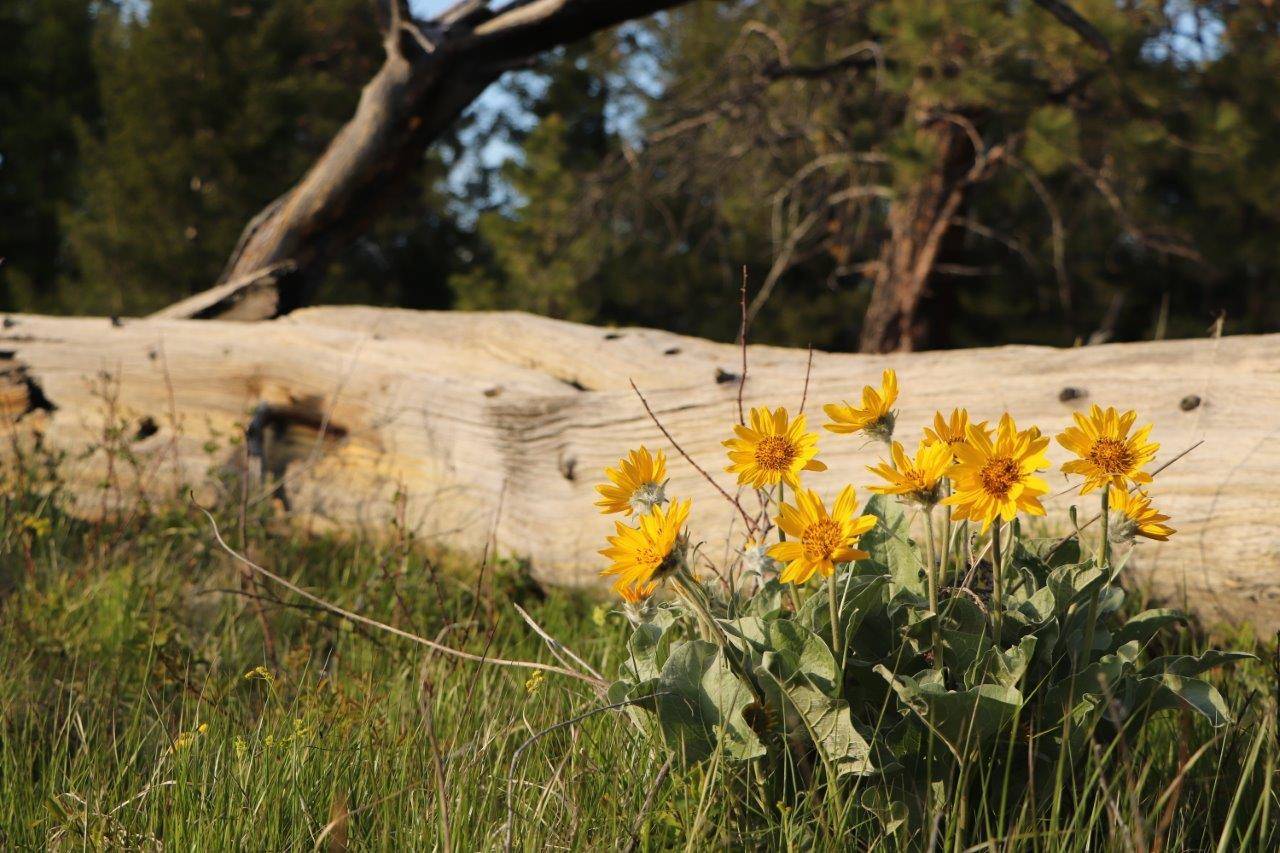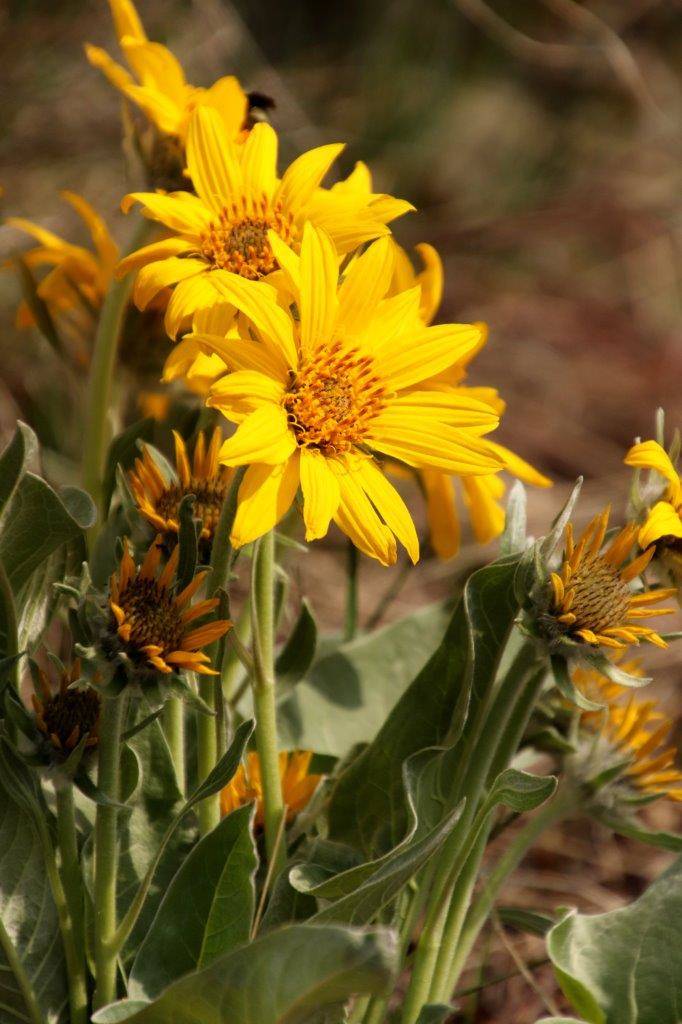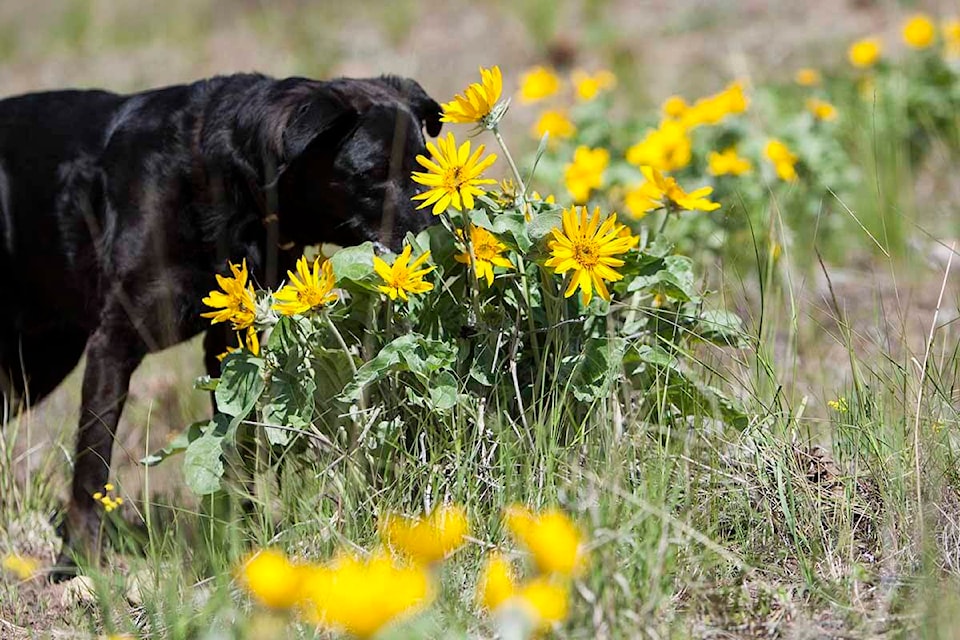The days are getting longer and warmer and as we head into May, many locals are taking to the trails to hike, mountain bike and get some fresh air.
Every year East Kootenay folks look forward to when balsamroot emerges from hibernation and begins to bloom. This typically happens within the first few weeks of May and is a fairly short-lived experience, especially with warm temperatures.
According to the Sierra Club of BC, Balsamroot is a relative of the sunflower. The plants grow from B.C. and Alberta to California in plains and valleys, and to elevations of 2,700 metres. Balsamroot can take up to ten years to establish as their taproots are large and constantly in search of water.
Similar to dandelions, when picked, balsamroot wilts quickly and will not hold up in water as a cut flower.
Balsamroot has long been used traditionally by Indigenous peoples. The Sierra Club explains that the entire plant has an important use from it’s high fibre content when eaten, to sap that can be used as a disinfectant.
Local Wildlife Biologist Ian Adams explained that the native plants require longevity to grow and the fact that they are so abundant in these areas is a good indicator that the ecosystems they grow in are doing fairly well.
Some of the most popular local areas that these sunflower cousins are often found include Eager Hill, Wycliffe Buttes and Sunflower Hill in the Kimberley Nature Park.
“Balsamroot grows in generally sunny areas, such as grassland and open forests in the Rocky Mountain Trench,” Adams said. “It’s known as an iceberg plant - the vast majority of the plant grows underground. Because these areas are quite dry, balsamroot has large taproots and they have to grow far down in search of water.”
This also protects the plants from fire. Even if a wildfire takes out the top of the plant, the roots are so vast that they will remain underground. However, it may take years for the plant to bloom again.
Adams pointed to another, fairly similar native plant - bitterroot. Bitterroot has leaves similar to succulents and by the time the plant blooms in June, the leaves are gone and what’s left is a pink and purple flower.
“Once the blooming period for bitterroot ends, it has to wait an entire year for another period of photosynthesis,” Adams explained. “It’s a very short period of time. It’s similar for balsamroot, by August, there’s not much of the plant left above ground.”
Fire may not be a huge threat to balsamroot, but invasive species are.
“One of the biggest threats to native wildflowers, like balsamroot, are invasive species. Invasive species are not palatable to wild ungulates or cattle so they threaten these grazing areas,” Adams explained, adding that balsamroot is food for livestock and ungulates.
He says that one of the biggest vectors for spreading invasive species includes mountain bikes.
“Mountain bikes are one of the main sources for spreading invasive species. When people go off the trails they pick up mud and seeds from plants like knapweed, for example. The worry is that they take their bike to another trail and spread that knapweed to other areas. It’s critical that people keep their bikes clean, and try to stick to the designated trails the best they can.”
He says that off road vehicles like ATV’s and dirt bikes are another concern, as they can easily spread invasive species. Keeping bikes, off-road vehicles and shoes clean is one of the best ways to prevent the spread of invasive species.
Adams says that the yearly spectacle of balsamroot is important for many reasons, including our mental health.
“The aesthetic value of these flowers is important, especially during times like this,” Adams said, referring to the pandemic. “We’re incredibly lucky to live where we do. For the last year, the ability to be able to get out and enjoy our trails and wild areas, without a whole lot of other people around is a blessing. I couldn’t imagine living in a large city centre at a time like this.
“Hopefully others share this sentiment and this raises people’s awareness of the importance of stewardship for these areas. Treating and maintaining these areas that we all love so much is crucial.”
corey.bullock@cranbrooktownsman.com
Like us on Facebook and follow us on Twitter
Want to support local journalism during the pandemic? Make a donation here.
